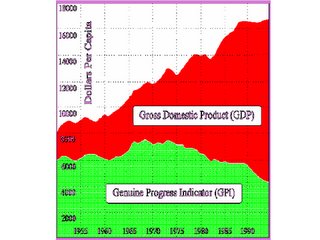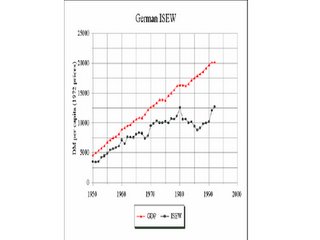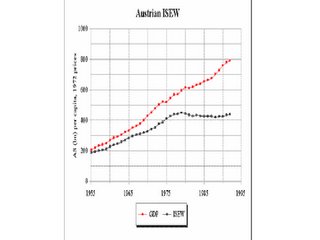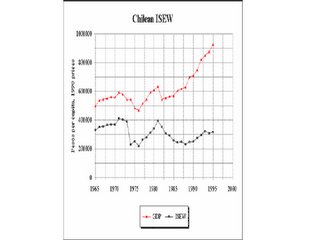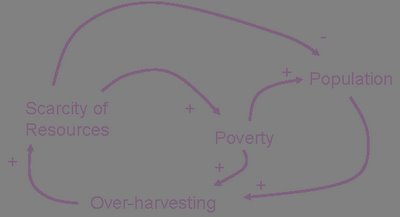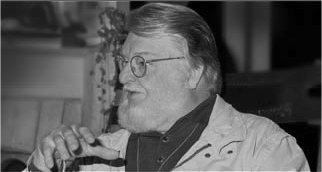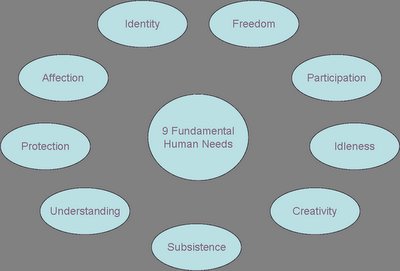Just a copy of a recent assignment - Part I is more or less just a synthesis of some recent readings and lectures on organizational vision. Part II is probably a little more interesting looking at what Ford Motor is doing in terms of Sustainability.
Part I – The Organizational Vision: Composition, Creation and Uses
According to Peter Senge, the vision is “a force in people’s hearts, a force of impressive power.” This force is the result of a gap between the vision and the current situation within the organization, which provokes a creative tension within people, and drives them to get from “here” to “there”. The organizational vision is an articulation of the soul and character of an organization. As such, it acts as a guiding force and a shared point of reference for the organization and the individuals that make up the organization. A powerful vision will motivate, energize and inspire people in a certain direction by providing a shared goal and a “common caring” for all members of the organization. The vision encapsulates the duality of any organization that creates meaning and strength through a strong, core identity, while at the same time constantly strives to innovate, improve and move towards a desired future. The vision is something that can never be ‘achieved,’ but always provokes progress.
It is difficult to pin down a specific definition of what an organizational vision is, so a description of the common components of visions is helpful. According to Collin and Porras in Built to Last the vision encompasses both the Core Ideology (including core values and core purpose) and the envisioned future (ambitious long term goals and inspiring descriptions of the future).
Core ideology speaks to the strong, steady identity of the organization. It is partly made up of core values, which are akin to the organization’s character or personality. These are intrinsic values to which the company holds fast regardless of market conditions or demands, and they should stand up to the question: would you still hold these values if they acted as a disadvantage to you, if you could make more money by abandoning them?
The other key aspect of core ideology is core purpose, which justifies an organization’s existence. It identifies why the organization is important to society and what needs the organization aims to satisfy and for whom. While the core purpose does not change (Collin and Porras suggest it should last at least 100 years) it does inspire change. As it is not meant to be something that can ever fully be realized, the organization must constantly change in its pursuit.
Complementing the core ideology is the envisioned future of an organization, which consists of some combination of strategic goals and/or vivid descriptions of the future. Strategic goals respond to what customers and other stakeholders value and set ambitious targets for the organization to achieve. While achievable, they should be challenging enough that success is not guaranteed. Collin and Porras put them into four categories: target (become a $1 billion company by 2010); common enemy (overtake the market leader); role model (emulate the market leader of another industry); and internal transformation (focus on a revitalization or dramatic shift in the model within the organization). Leaders can transform these strategic goals into vivid descriptions of future success to excite and energize members of the organization.
Just as a vision can take many forms, it can be created in a variety of ways. In The Fifth Discipline Fieldbook Bryan Smith outlines five methods for building a shared vision: telling (the boss creates a vision and tells members that they must get excited about it); selling (management creates a vision and brings it to the members hoping for buy-in); testing (a vision is brought to members and if they’re not enthusiastic, it is revised); consulting (members are asked to provide input for the vision); and co-creating (members work in teams to create and revise a shared vision).
The most effective method depends on the size and nature of the organization. Ideally co-creating is possible because the process allows for people to create personal meaning in their work, it promotes teamwork, and results in a truly shared vision. However, it takes skillful leadership and a lot of time to teach dialogue skills, and allow trust and interdependence to develop. Although the process can potentially be long and costly, the process is beneficial regardless of the outcome. Allowing people to align their personal values with their work will prove to be a competitive advantage for companies as employees increasingly demand a fulfilling work experience.
A vision – and particularly a co-created vision – is important in regards to strategic sustainable development because the task is monumental. Thus, it requires the personal commitment of many people that a powerful vision inspires. It also requires the cooperation of many people that co-creation enables. A vision is also necessary in terms of defining success for sustainability with the four sustainability principles because if we don’t know where we are aiming to go, it is very unlikely that we will get there.
In terms of strategic management, a vision is helpful because it (1) provides an effective way to frame action plans and it (2) promotes integration throughout the organization. In terms of framing the action plan, an organization can better assess its strengths, weaknesses, threats and opportunities as they relate to moving towards the vision. The organization can then identify and prioritize measures in such a way that they create strategic movement towards the vision. In terms of integration, the shared mental model that the vision embodies enables the members of the organization to better communicate and cooperate in order to more effectively implement and carry out the action plan
Part 2: Ford Motor Company – The Challenge of Re-Visioning the Road to
Sustainability
Henry Ford had a highly compelling vision for the Ford Motor Company in the early 1900’s to “democratize the automobile.” This vision was central in sparking the explosion in automobile transportation and infrastructure over the past century and in keeping Ford aligned as a leading company throughout the changes and competition of that explosion period. Today the company’s vision is a bit less inspirational: “To become the world's leading consumer company for automotive products and services.” However, in terms of strategic sustainability, the company is very close to tipping from a reactive ‘market chaser’ back to the inspirational visionary kind of company it was at its inception 100 years ago. In a speech at the Greenpeace Business Conference in 2000, Bill Ford said: “Ford Motor Company once provided the world with mobility by making it affordable. In the 21st century, we want to continue to provide the world with mobility by making it sustainable.”
Currently, Ford touches on sustainability in its statement of values, a sub-set to its vision, saying, “We are a leader in environmental responsibility. Our integrity is never compromised and we make a positive contribution to society.” While this is a rather vague statement and a small component of the vision, the company has also published an extensive Annual Sustainability Report since 1999. In the 2004/05 Report, Bill Ford wrote an introduction, titled “Setting the Vision,” in which he stated:
At Ford Motor Company, we have made sustainability a long-term strategic business priority… Sustainability is about ensuring that our business is innovative, competitive and profitable in a world that is facing major environmental and social changes.
I would argue that Bill Ford is working strategically to bring a vision of sustainability to the company, using the Sustainability Report as a flexible platform to do so.
He has faced a lot of resistance in his attempts to integrate a sustainable vision into the company that his great-grandfather founded. In 2000, he articulated this frustration, saying, "everyday I would push environmental ethics and the top executives hated me for it. It's been a ten year struggle to get where we are now, which is to acknowledge that environmental leadership is central to our strategy.”
And the struggle continues. In 1999/’00 Ford was faced with a myriad of challenges. The first Sustainability Report, Bill’s vocal, public stance on sustainability, and the company’s withdrawal from the Global Climate Coalition (an industry association designed to discredit climate change science) all spooked Wall St. In addition, the Bridgestone/Firestone recall and the bursting technology ‘bubble’ created a ‘perfect storm’ that made sustainability initiatives very difficult. When Bill was appointed Chairman in 1999, Ford’s stock was trading over $35, in March of 2000 it was below $25, after September 11th it broke below $20, and today it is below $10. This has proven to be a difficult environment in which to push sustainability because of the existing context where the vast majority of players in power (within the organization, the investment community, and government) are stuck in the mindset that social and ecological initiatives come necessarily at the sacrifice of economic performance.
As a result, Ford has not lived up to his promise to reduce SUV fuel consumption by 25% by 2005, and in fact CO2 emissions per vehicle and fuel economy are essentially unchanged over the past 5 years. Still, Ford has worked to push sustainability initiatives. In 2000, William McDonough was hired to redesign the company’s Rouge River manufacturing facility and construction is underway. Bill Ford, who said, "we want this manufacturing facility to be what it was 80 years ago, the most copied industrial site in the world-but this time for sustainability,"
The company has eliminated mercury switches in all models as of 2002, installed a large solar array in its Wales plant, and was a founding member in the Chicago Climate Exchange and the UK Trading Scheme. As of September, the company committed to increasing hybrid production 10-fold by 2010, introducing 4 new Flexible Fuel (ethanol) vehicles in ’06, and initiating projects to offset greenhouse gas emissions from manufacturing hybrids. Also, and of utmost importance the company has acknowledged that the future of sustainable mobility will include a combination of better vehicles, fuels, city planning, and conceptualizations about transportation. Regardless, environmentalists are still largely critical of Ford’s initiatives and accuse the company of “green-washing” with the aggressive rhetoric in 2000.
At the recent Clean Vehicles and Fuels Conference in Stockholm, Ford representative Nils Lekeberg said that after pulling back from sustainability initiatives Bill Ford is “officially” back on his environmental crusade. In this year’s Sustainability Report, Ford says “our responsibility to our customers, shareholders, employees and communities includes preparing for the future without delay.” This statement shows that he understands the importance of vision that includes sustainability. The fact that it has proven so difficult to make that change demonstrates that top-management commitment to sustainability is not necessarily enough to integrate those values and that sense of purpose into the company – without a lot of work – particularly in a publicly-traded company.
In addition to the difficulties discussed above surrounding integrating sustainability into the ‘mainstream’ culture at Ford, the company also has some obvious weaknesses within its Sustainable Business Strategies Team. First of all, its definition of sustainability is flawed: “At Ford, we have defined sustainability as a business model that seeks to create value for stakeholders by preserving or enhancing environmental, social and economic capital.” While these are important and admirable aims, they are unclear and could be ineffective in steering the company towards sustainability – how much “preserving or enhancing” is enough? Is sustainability a “business model” or a dynamic state of being? Is an organization sustainable if it only “seeks to create value…”? The group does acknowledge that this is a “working definition,” but it doesn’t provide a clear definition of success in terms of sustainability.
If Ford hopes to be more effective in its approach to sustainable development, sustainability needs to be incorporated into their overarching vision. The existing vision “to become the world's leading consumer company for automotive products and services” does not align with the sentiments expressed in the Sustainability Report, which implies a vision along the lines of “to become the world’s first sustainable mobility company.” In order to establish that they are moving in the right direction towards that goal, they will also need a more concrete, scientific definition of success in terms of sustainability, which the four Sustainability Principles provide.
*************
Still busy here in Karlskrona - just finished a presentation on state of Europe in terms of sustainability, focusing on climate change, which is quite interesting to do with CoP 11 happening in Montreal right now - hopefully some strong news will come from it.
We've gotten some snow and the Christmas decorations are up all over town, so things are good. Hope you're all well as we slide into the holidays - take care and stay going...

